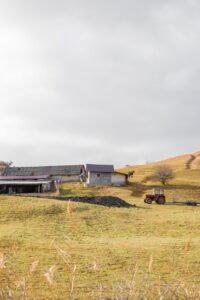Thanksgiving around the corner
It is almost time again for that great holiday of food and football where we gather by the masses around the TV screen or the table. Thanksgiving has developed into a strange holiday; it is one of the few American (and Canadian) holidays observed without religious connotations, even though it was originally steeped in religious ceremony and symbolism.

This archived article was written by: Carlie Miller
It is almost time again for that great holiday of food and football where we gather by the masses around the TV screen or the table. Thanksgiving has developed into a strange holiday; it is one of the few American (and Canadian) holidays observed without religious connotations, even though it was originally steeped in religious ceremony and symbolism.
Thanksgiving was so named because it was a time when the community gathered and gave thanks to God for the year’s harvest and to ask for the next to be as bountiful or better. The holiday incorporates many aspects of a harvest festival in that it is also a “last hooray” where the community practice ceremonies, play games or just have a good time together while the weather is good. The year is pretty much considered over when the cold, long winter hits and people isolate themselves in their homes until spring.
No one is quite sure who created Thanksgiving or when it was first practiced. In America, the first Thanksgiving was not actually the first. The colonists in Virginia celebrated Thanksgiving years before the Plymouth Pilgrims even set foot on the New World, and according to some scholars, the Spanish in Florida had been partying for over fifty years before the Mayflower was even built. One of the reasons it is difficult to pinpoint the creation of Thanksgiving is that the holiday is not really unique. Thanksgiving is a type of harvest festival celebrated in autumn after the last harvest. Harvest festivals have been celebrated pretty much since the beginning of agriculture.
Thanksgiving in the United States was not an official holiday until 1941 when President Franklin D. Roosevelt signed a bill designating the holiday on the second to last Thursday in November. We had been celebrating Thanksgiving as a country since we became a country (sometimes we even celebrated it multiple times a year), but it was not official. George Washington issued the first Thanksgiving of our newly created nation (on Oct. 3, 1789) and again a few years later. John Adams proclaimed the holiday in 1789 and 1799 while Thomas Jefferson didn’t declare any Thanksgiving during his presidency. James Madison loved the holiday so much, he issued two celebrations in the same year. It was not until President Lincoln that Thanksgiving was given a standard day of celebration (the last Thursday of November) and it was proclaimed an annual holiday (though still not official).
Roosevelt changed the date of Thanksgiving to the fourth Thursday in November in order to boost the retail sales during the Great Depression. However, this change did not go over too well. The new date was called “Franksgiving” and became part of the platforms for many of Roosevelt’s political opponents. Most of the states went along with the change but the rest refused and held the holiday on the original date which they nicknamed “Republican Thanksgiving.” Three states wanted no part of the conflict and decided to hold holidays in both weeks.
As we approach “Turkey Day,” I will mention some holiday facts that you can awe your friends and family with (and prove that you do actually learn something in college instead of sleeping through classes).
So what is that red growth drooping over the turkey’s beak called? The official name is “wattle,” though those who deal in turkeys call it a “snood.” A snood also happens to be a type of hairnet used by the female factory workers during World War II to keep their hair from being caught in the machinery. It is not known whether the wattle or the hairnet was first called a snood, but they have a comparable appearance.
Wishing on the turkey collarbone was started thousands of years ago by the Etruscans, historians say, though they used the collarbones of chickens instead of turkeys (which are native to the Americas and did not arrive in the old world until the conquistadors brought them back to Spain). The Etruscans believed that hens could foretell the future. They would place a hen in the center of a circle surrounded by letters of the alphabet and bits of chicken feed would be placed at each letter. The first letter the hen went to indicated the answer. After the hen gave its answer, the Etruscans would sacrifice it and save the collarbone. Two people would make wishes on the bone and break it in the same fashion we use today. The wish was granted to whoever got the longer bone piece. The tradition survived through the centuries, and when the Romans invaded England, they passed it on. We, in America, were given this custom by the British, though we altered it a bit in using the larger turkey collarbone instead of a chicken’s.




